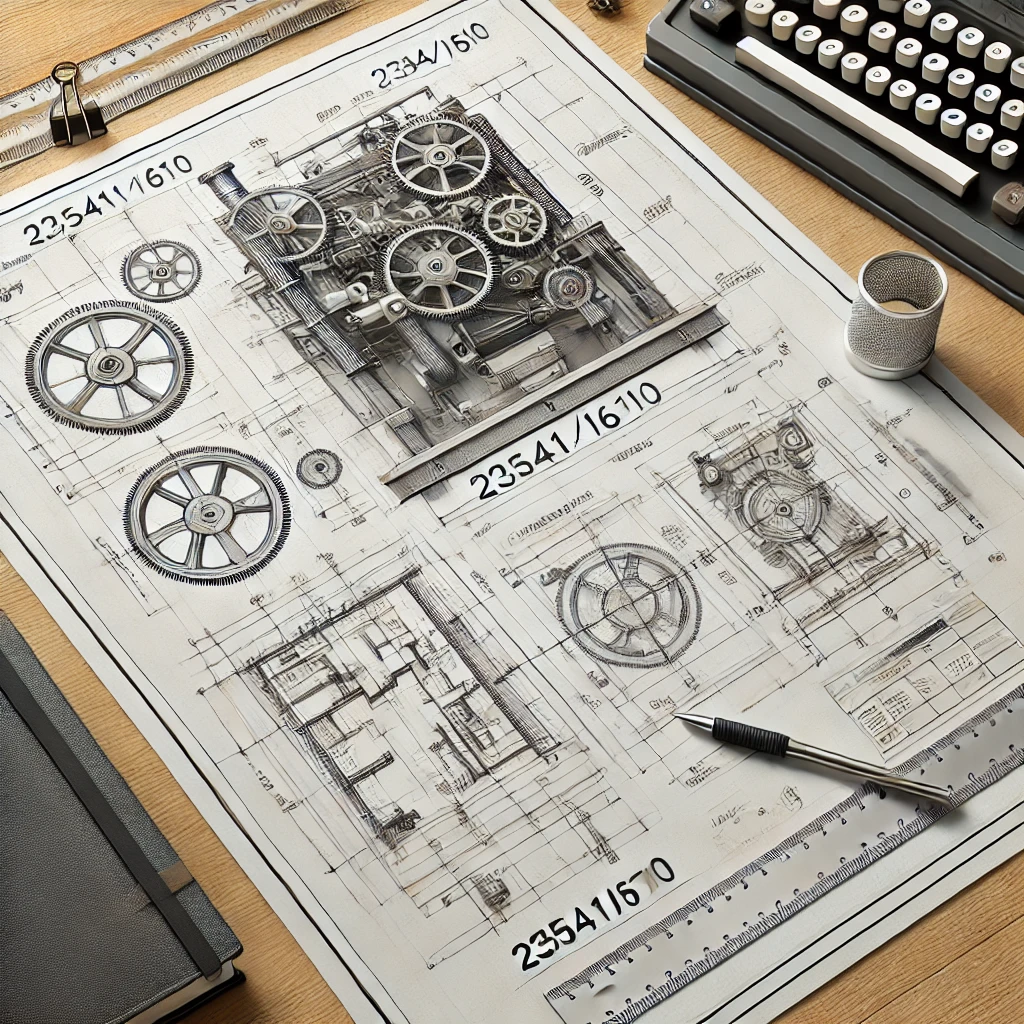Numerical designations like 23541/1610 play a vital role in defining standards, dimensions, or technical specifications in various industries. These identifiers ensure precision, enhance communication, and streamline construction, manufacturing, and logistics processes. This article explores the meaning, applications, and importance of 23541/1610, providing clarity and answering common questions about its use.
What is 23541/1610?
23541/1610 is often a technical term or code used to denote specific dimensions, tolerances, or standards. Its application varies based on the context and industry, but it typically refers to:
- Measurements: Exact lengths, widths, or heights in engineering, construction, or design.
- Standards: Industry benchmarks for production or quality assurance.
- Identifiers: Product or part codes in logistics or manufacturing.
Understanding its meaning depends on examining its use within the given field.

Applications of 23541/1610
Construction and Engineering
In construction, 23541/1610 is commonly used to define precise dimensions for materials or structural elements. It ensures accuracy and compliance with project specifications.
Examples:
- Beam Dimensions: A steel beam might have a length of 23541 mm (23.541 meters) and a width of 1610 mm (1.61 meters).
- Wall Specifications: Blueprints could list these dimensions for walls or support structures in commercial buildings.
Manufacturing
In manufacturing, 23541/1610 ensures product uniformity and compatibility. It may refer to:
- Component Sizes: Parts produced to these measurements ensure seamless integration in larger systems.
- Tolerances: Specifications for acceptable size variations during production.
Example: A machine part designed to 23541/1610 tolerances guarantees precision and functionality when assembled into a device.
Logistics and Packaging
In logistics, 23541/1610 describes shipping dimensions or container sizes, optimizing storage and transport.
Examples:
- Container Dimensions: A freight container might measure 23541 mm x 1610 mm to maximize cargo space while adhering to transport regulations.
- Standardization: Such measurements streamline logistics by aligning with industry-wide practices.
Product Design and Compliance
In product design, 23541/1610 ensures adherence to industry standards and customer requirements, promoting quality and reliability.
Examples:
- Furniture Design: A tabletop or frame might be manufactured to these specifications for consistency.
- Safety Standards: These dimensions might reflect compliance with safety or ergonomic guidelines.
Why is 23541/1610 Important?
Precision
In construction or manufacturing, exact measurements like 23541/1610 eliminate ambiguity, reducing errors and waste.
Standardization
Adopting common measurements promotes uniformity across industries, making processes efficient and collaborative.
Compliance
Aligning with standards like 23541/1610 ensures adherence to legal and regulatory requirements, avoiding penalties or project delays.
Benefits of Understanding 23541/1610
- Operational Efficiency: Knowing these specifications minimizes miscommunication and optimizes resource utilization.
- Improved Accuracy: Enables precise execution in technical applications, reducing the risk of errors.
- Enhanced Collaboration: Facilitates seamless coordination between teams, suppliers, and clients.
Challenges in Using 23541/1610
While 23541/1610 provides clarity, challenges include:
Misinterpretation: Without proper context, it can lead to confusion.
Varied Applications: Differences in interpretation across industries may complicate communication.
Implementation Costs: Achieving compliance with such standards may increase production expenses.
Best Practices for Applying 23541/1610
Consult Documentation: Review blueprints, manuals, or industry guidelines to confirm meanings.
Leverage Expertise: Collaborate with engineers, designers, or industry professionals to ensure accuracy.
Use Precision Tools: Employ advanced measuring devices to verify dimensions and tolerances.
5 FAQs About 23541/1610
What does 23541/1610 mean in construction?
In construction, it typically denotes material dimensions or structural measurements, ensuring precision and compliance with blueprints.
for more info
How is 23541/1610 used in manufacturing?
It can refer to tolerances, part sizes, or specifications that guarantee compatibility and quality in production processes.
Is 23541/1610 related to logistics?
It often describes container or package dimensions, streamlining storage and transportation.
Can 23541/1610 apply to product design?
Absolutely. It may represent measurements critical to product functionality, safety, or aesthetic standards.
How do I interpret 23541/1610 correctly?
Understanding its context is essential. Consult technical documents or industry professionals for accurate interpretation.
Recap FAQ: What Does 23541/1610 Mean in Construction?
The term 23541/1610 is widely recognized in construction, where precision and compliance are paramount. Here’s an in-depth look at its meaning and relevance in this field.
Dimensional Specifications
In construction, 23541/1610 often represents:
- Material Dimensions: For example, a beam may measure 23541 mm (23.541 meters) in length and 1610 mm (1.61 meters) in height.
- Blueprint Notations: These measurements are commonly found in technical drawings to ensure alignment with design plans.
Material Standards
The term may also indicate standards for materials used in construction, such as:
- Pre-Cut Sizes: Materials prepared to these dimensions minimize waste and improve efficiency.
- Safety Compliance: Ensures materials meet load-bearing and durability requirements.
Industry Compliance
Adhering to standards like 23541/1610 helps construction projects meet legal and safety benchmarks, reduce risks, and ensure quality.
Practical Applications
Consider a construction project for a commercial warehouse:
- 23541 mm (23.541 meters): Specifies the length of a wall or beam.
- 1610 mm (1.61 meters): Indicates its height or width.
By adhering to these dimensions, contractors ensure the structural integrity and efficiency of the project.
Challenges and Solutions
Challenges in using 23541/1610 include misinterpretation or varying applications across industries. Best practices include:
Consulting Blueprints: Always refer to the original design documents.
Collaboration: Work with architects and engineers to verify dimensions.
Precision Tools: Use advanced measurement devices to ensure accuracy.
Conclusion
In construction, 23541/1610 is a cornerstone for precision and compliance. By understanding its meaning and applications, professionals can execute projects efficiently, safely, and to the highest standards.



